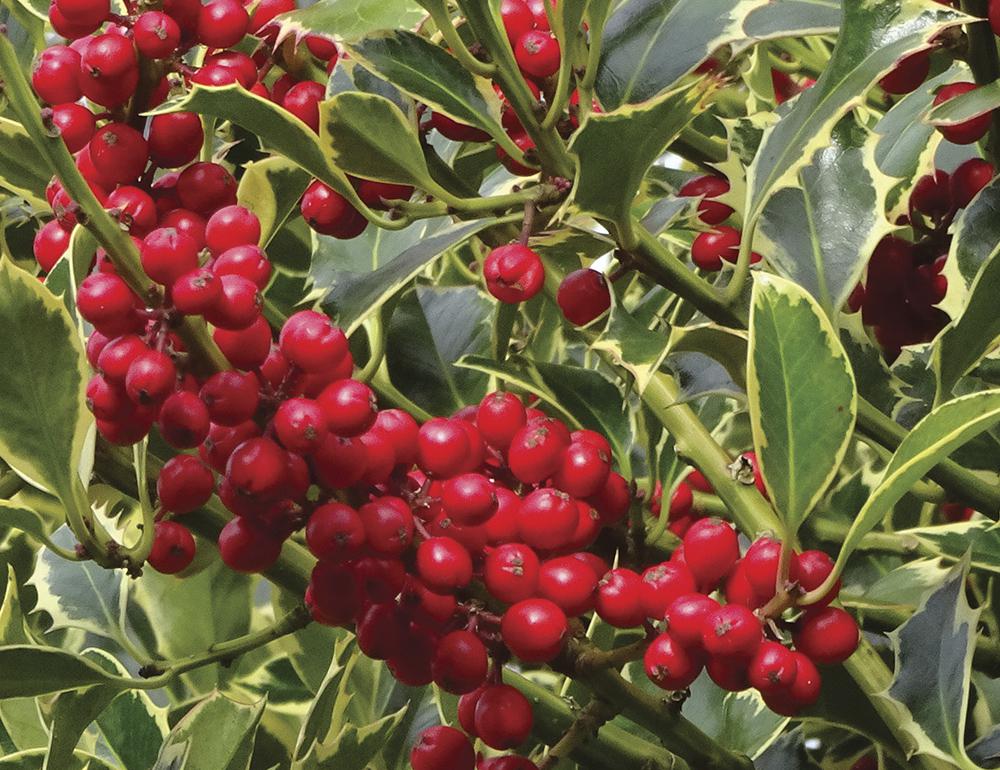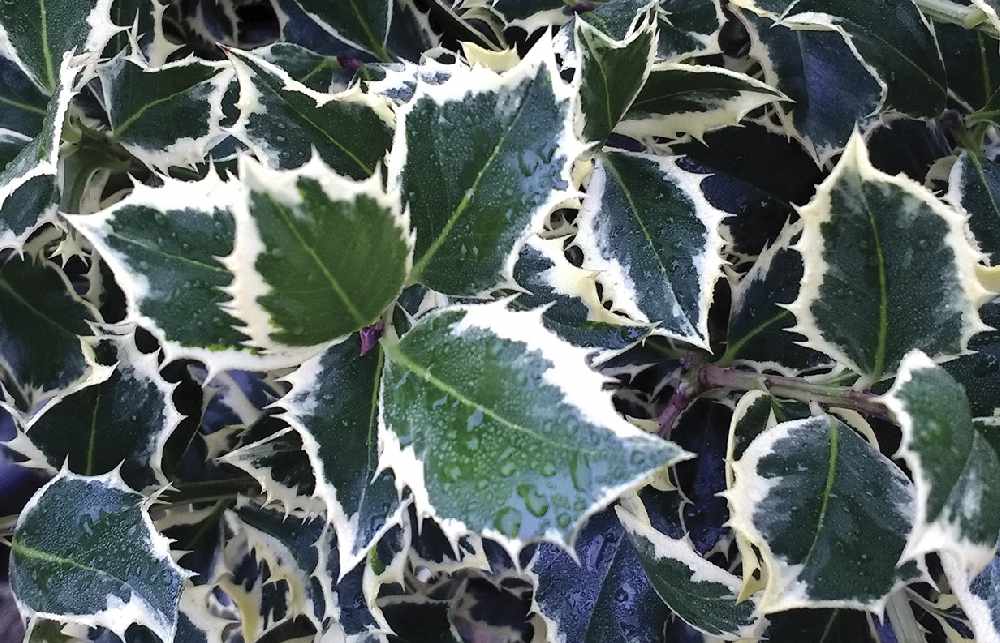
There’s a lot more to holly than spiky green leaves and a few red berries, so it’s over to Peter Erridge to explain all things historical and all things prickly
Fossils indicate ancestors of holly existed around 50 million years ago. The Druids considered holly to be a sacred plant with a strong place in their belief system; as a symbol of fertility, eternal life, and protection against lightning strikes. The wood of holly was said to repel evil spirits when used as doorsteps. Druids also hung holly indoors to assure them that spring would come.
For Druids, cutting down a holly tree was thought to bring bad luck. Reputedly during the Tudor and Stuart periods holly hedges in Sussex were left uncut to deter witches from running along the tops. Hollies were more numerous in Britain prior to the Enclosure Acts of the mid-18th century, which led to removal of many hedges. Holly is still found in hedgerows, usually grown from seeds dropped by birds; and is left as markers of ebony. There is a report of 150,000 hollies being felled in Staffordshire in 1802 to make bobbins for the Lancashire cotton mills.
The holly genus is widespread in temperate and sub-tropical regions of the world, but large holly woods thrive mainly in Britain. There are over 450 species of holly, including trees, shrubs and climbers. They occur in temperate and tropical climates and grow in most soils except wet and poorly drained, preferring acid soils. Hollies are hardy and adapted to the shade of woodlands, creating an understory. Along the west coast of North America they have spread into the native forests and are regarded as an invasive species. Their thick leaf surface helps reduce water loss when the ground is frozen.
Being rich in nutrients holly is often grazed by animals and until the early 18th century farmers used it as a feed. Above grazing height leaves tend to be smooth. The larger shrubs and trees with dense foliage provide shelter from harsh weather for cattle and birds. Few diseases or pests affect hollies although the caterpillars of Holly Blue butterflies feed on the leaves.
Folklore relates a heavy crop of berries to a forthcoming hard winter, when in fact the density of berries depends on the number of pollinating insects at flowering time.
Readers should know of Ilex aquifolium, the English holly, with dark green spiny leaves. However, there are many cultivars some with a variable number of spines, or no spines, and some with yellow or silver leaf colouring. Most hollies are either male or female with only the latter bearing berries. A word of caution – some varieties have misleading names such as Golden Queen, which is actually a male holly!
Although most berries are red, they can also be yellow, white, or black. They contain poisonous substances affecting people and animals. With children, eating as few as two berries can lead to stomach upsets. For birds, they’re more palatable after being frosted when the berries soften and have a milder taste. Germination of holly seeds can be slow taking from 6 to 16 months.
Things have gone full circle since the Druids and these days it’s considered unlucky to bring holly indoors before Christmas Eve, but good luck should ensue if this holly is burnt in the garden after Christmas.


 Blooming Times: Happy Faces
Blooming Times: Happy Faces
 Blooming Times: Winter Sparklers
Blooming Times: Winter Sparklers
 Homes Extra: Restore, Repair, Recycle
Homes Extra: Restore, Repair, Recycle
 Home Style: A Scandi Winter's Tale
Home Style: A Scandi Winter's Tale
 Blooming Times: Winter Wonders
Blooming Times: Winter Wonders
 Home Style: Bold, Brave & Beautiful
Home Style: Bold, Brave & Beautiful
 Blooming Times: The Answer Lies in the Soil
Blooming Times: The Answer Lies in the Soil
 Blooming Times: Heavenly Hyacinths
Blooming Times: Heavenly Hyacinths
 Legendary Builds with Phoenix Construction Services
Legendary Builds with Phoenix Construction Services
 Blooming Times: Know Your Enemy
Blooming Times: Know Your Enemy
 Bespoke Dreams from Eridge Green Kitchens
Bespoke Dreams from Eridge Green Kitchens
 10 Hot Years: iFit Fires & Flues
10 Hot Years: iFit Fires & Flues
 Home Style: Bold Type
Home Style: Bold Type
 Blooming Times: The Sky's the Limit
Blooming Times: The Sky's the Limit
 Home Style: A Better Way of Life
Home Style: A Better Way of Life
 Homes Extra: Shed Space
Homes Extra: Shed Space
 Blooming Times: Top of the Pots
Blooming Times: Top of the Pots
 Kids Zone: Get the Kids Growing
Kids Zone: Get the Kids Growing
 Home Style: Pastures New
Home Style: Pastures New
 Homes Extra: Let There Be Light
Homes Extra: Let There Be Light